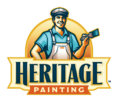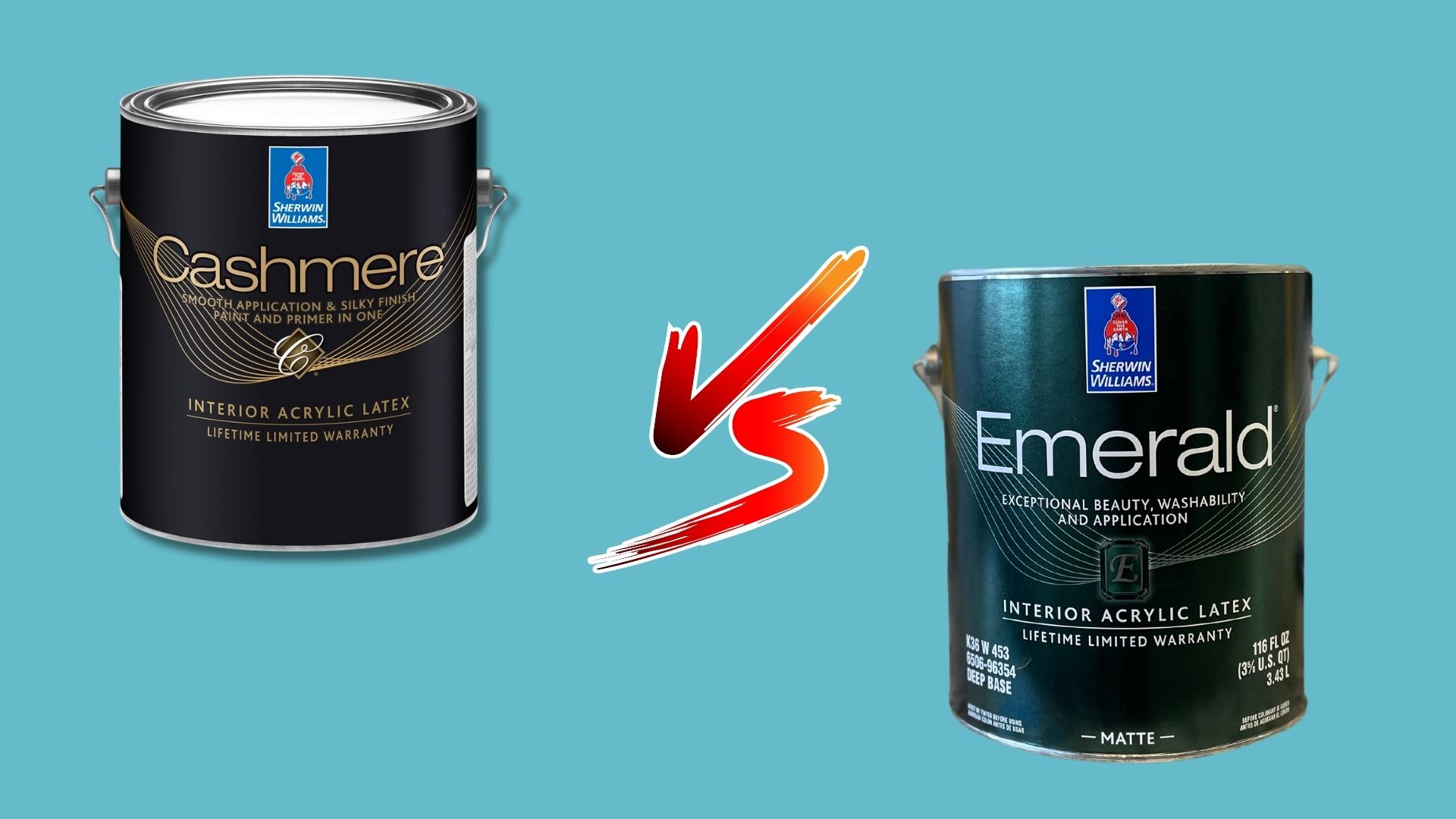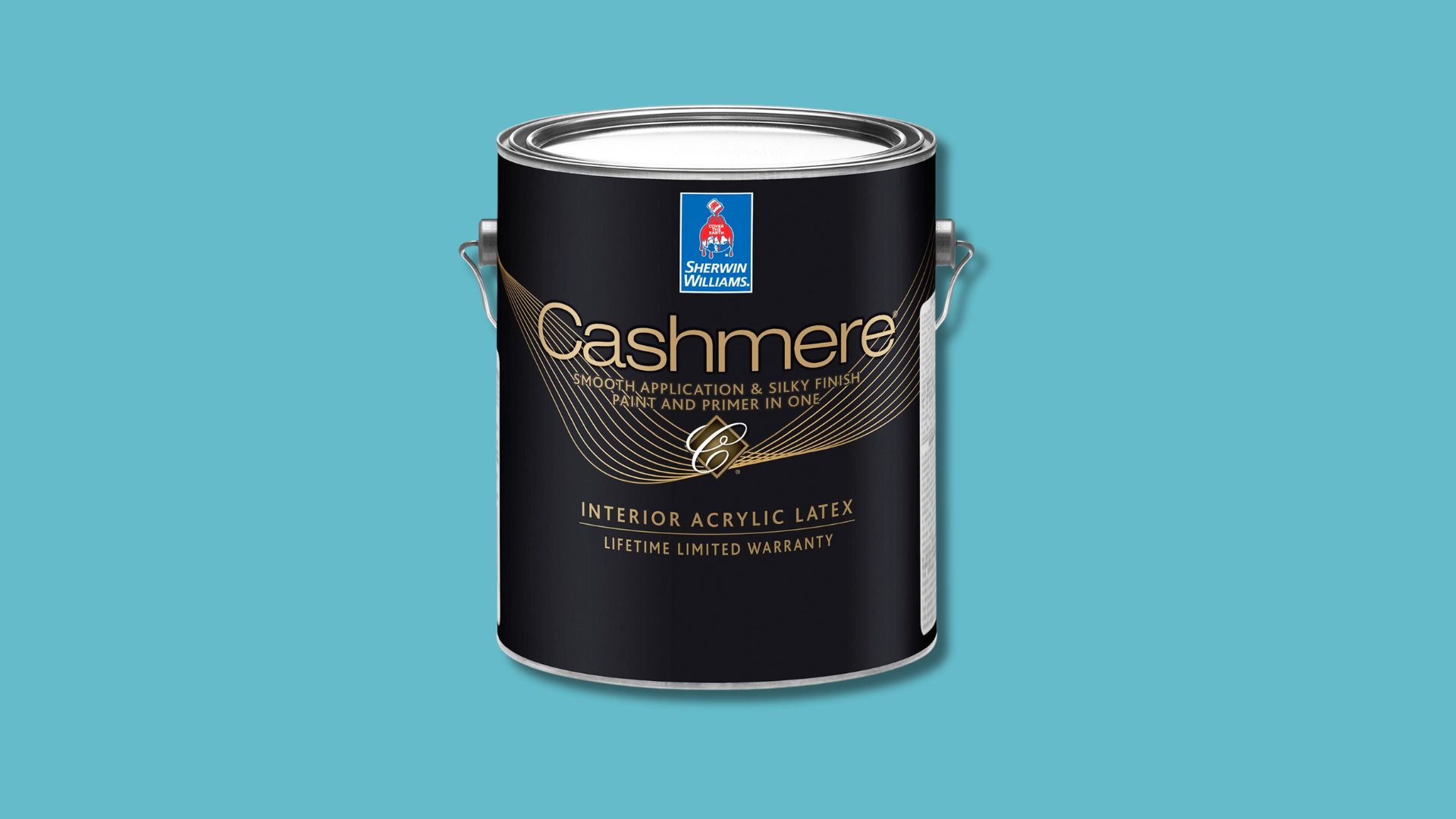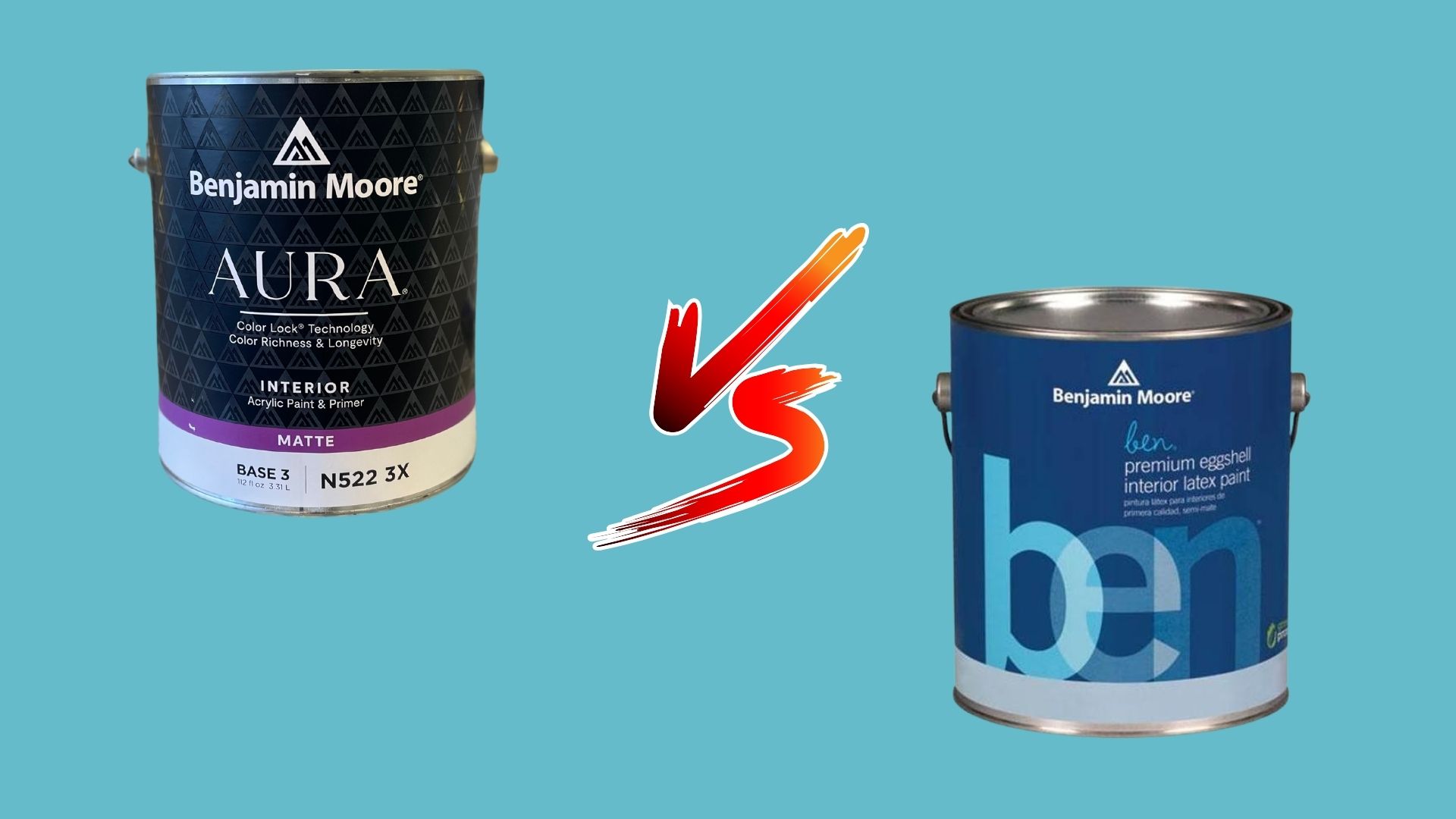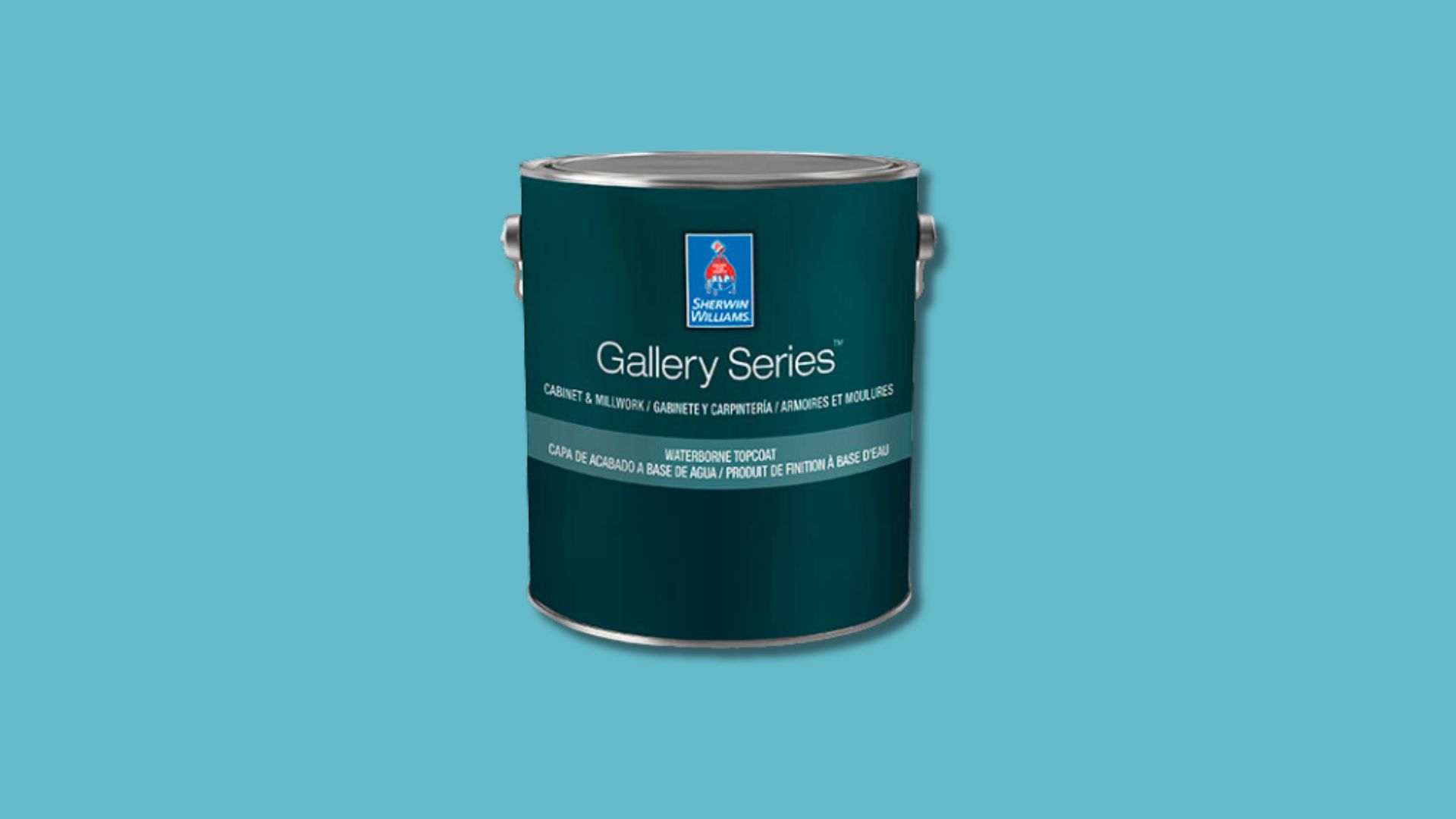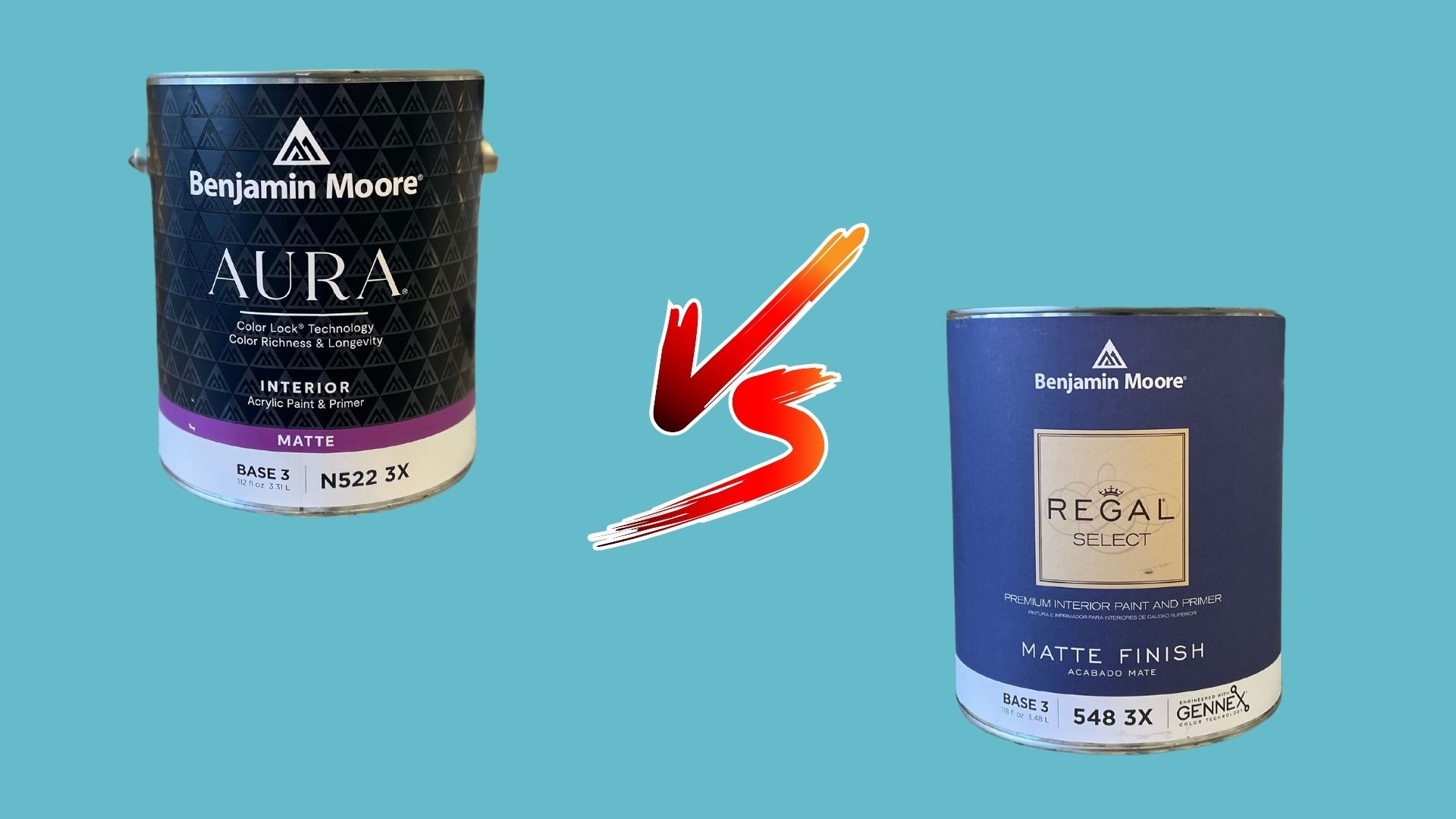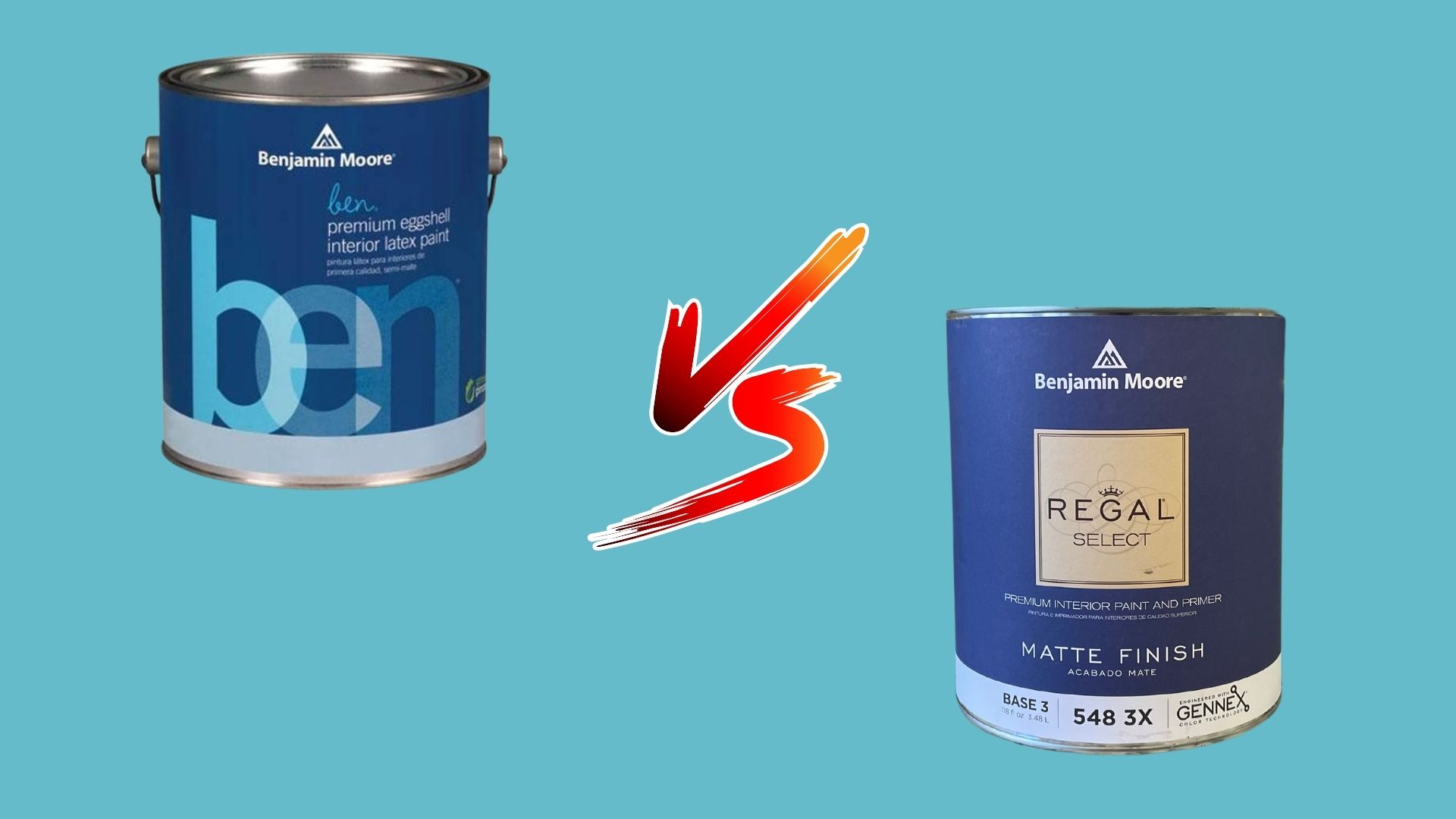What Is Primer?
If you’re repainting your home, you are probably wondering if you need to use primer paint. You may not even be sure what the difference between primer and regular paint is. Well, we’re here to help answer all your questions and explain why primer is so important in the painting process.
Paint primer is a critical first layer on any surface because it helps the topcoat adhere to the surface. The paint also lasts much longer with primer than without.
Recommended reading:
Sherwin-Williams Emerald vs Cashmere
Sherwin-Williams Emerald vs Cashmere If you are repainting your home interior, you want to use the best product possible. Two of…
Sherwin-Williams Cashmere Review
Sherwin-Williams Cashmere Review Finding the right paint for a DIY project can be tricky. There are so many options available on…
Benjamin Moore Aura vs Ben
Benjamin Moore Aura vs Ben Benjamin Moore is one of the most popular paint brands, and its consistently the favorite among…
Sherwin-Williams Gallery Series Review – The New Gold Standard
Sherwin-Williams Gallery Series Review – The New Gold Standard Finding the right paint for kitchen cabinets can be tricky. You want…
Benjamin Moore Aura vs Regal Select
Benjamin Moore Aura vs Regal Select Benjamin Moore makes excellent products, and Regal Select and Aura are their very best interior…
Benjamin Moore Ben vs Regal Select
Benjamin Moore Ben vs Regal Select Benjamin Moore is one of the best paint manufacturers around, and many painters would argue…
WHAT IS PRIMER PAINT?
So how is primer different from regular paint? The simple answer is primer has a higher resin density than regular paint. These paints bind to the wall materials and create a smoother surface. The higher resin density also helps the topcoat paint – which has more pigment than primer – stick to the surface and adhere for a long time.
Using primer on a bare surface reduces paint failures like peeling and flaking, and it can block stains and odors that exist beneath the primer’s surface. Some of the benefits of primer include:
BENEFITS OF PRIMER
Use less paint – Some surfaces like wood are especially porous and will soak up paint. The primer serves as a buffer between the surface and the paint, and you will use less paint overall by applying it.
Helps paint adhere to surfaces (like vinyl/plastic) – Like we said before, primer has a higher resin density that paint will adhere to. This is particularly important on very smooth surfaces like vinyl and plastic that need the extra assistance to keep paint on the surface.
Paint lasts longer – Because of the improved adhesion, paint will last much longer on a surface without failing when you use primer.
WHEN TO USE PRIMER PAINT
Paint primer has a lot of paint benefits, but that doesn’t mean it is always necessary. However, primer isn’t always necessary. Here are some examples of times you should use primer:
WHEN TO USE PRIMER:
Porous surfaces: Porous surfaces like wood, bare drywall, and brick.
Drywall is skim-coated: A skim coat is thin layer of drywall spackle spread over a surface. Drywall compound is incredibly porous and will need primed before you can paint over it.
Previous coat glossy: The sheen on glossy surfaces is incredibly smooth, and paint is not going to stick well to that surface. Glossy surfaces need scuffing and a fresh primer over the surface to get maximum adhesion.
Going dark to light: If you plan on changing the color of the room significantly, namely going from a dark color to a light color, a primer is going to speed the process up. Lighter paint colors have trouble covering over darker ones and will require multiple coats to get full coverage.
Surface has stains: If the surface has stains, a primer will be necessary to prevent the stain from bleeding through the new coat of paint. This especially important for wood surfaces or any surface with clear nicotine stains.
WHEN YOU DON’T NEED TO USE PRIMER:
If the wall is already painted: If the surface is already painted, you usually don’t need to apply primer. The previous surface will serve the same purpose as a coat of primer.
The walls are clean (free of discoloration like nicotine stains): If there are no stains on the surface, you don’t need to apply primer. That’s assuming the surface has been primed and painted before. You will always want to prime wood surfaces to prevent tannin bleed-through.
If you are painting a similar color: Unlike when you paint from dark to light, you don’t need to prime if you are painting a similar (or the same) color as the original paint.
CAN YOU PRIME OVER WALLPAPER?
If you are having a hard time getting wallpaper glue off the wall, you can prime over it to prevent the glue from bleeding through. However, we don’t recommend painting over wallpaper even if you prime it. As the paint cures, it will contract and pull up the wallpaper at the seams. The only way to fix this is to remove the wallpaper and paint the wall again.
TYPES OF PRIMERS
There are several different types of primer on the market, and each are a little different depending on the base materials of of the paint formula. Here are the main types of primers you are likely to come across.
OIL-BASED PRIMER
Oil-based primers (and all oil-based paint products for that matter) are on their way out, so you likely won’t find them much anymore. That’s because they aren’t environmentally friendly and have a lot of VOCs. That being said, there are a few specific instances where oil-based primers can still be used.
Oil-based primers are great for sealing wood surfaces and preventing stains, so are a great option for painting trim and stairwell systems in stain conversions.
SHELLAC PRIMER
Shellac primer is the go-to alternative for oil-based primer because of its excellent stain-blocking qualities. This primer does have a very strong odor and high VOCs, though, so you will always want to wear a mask when applying it. It’s best to use this type of primer for specific jobs rather than as a general purpose primer.
ACRYLIC-LATEX PRIMER
Acrylic-latex (also called water based) formulas are the standard you will find in most paints and primers. They offer low-VOC (and often times no-VOC) products, making them a much more eco-friendly solution.
Latex primers also dry quickly, which makes them great for working quickly. However, they aren’t particularly well-formulated to block stains.
HOW TO USE PRIMER PAINT
PREP AREA
Before you ever begin painting, you will want to prep the surrounding area. This includes taking everything off the walls, moving breakable items out of the work area, and pushing any furniture into the center of the room.
You will also want to lay down plastic or drop clothes over anything you don’t want paint on. Next, tape off the area so you don’t get paint on the wrong surface.
Once the area is sufficiently prepped, you can begin working on the surface.
SAND THE SURFACE
Before you apply primer (or any coat of paint) you will want to sand first. Sanding scuffs the bottom layer and gives the primer a better grip on the surface. You will want to sand the entire surface that is getting painted.
If you are spot-priming, you only need to sand the area being primed for this step. You will sand the whole surface when it’s time to apply the top coat.
PRIME THE SURFACE
Once the surface is sanded, it’s time to prime. Generally, this means taking a brush and cutting in along the edges if you are painting interior walls. Then you will use a roller on the majority of the surface to spread the primer.
In some instances, like in a new build or in an empty home, a sprayer may be used. If that’s the case, the primer will also need to be backrolled if applied on ceilings and walls.
SAND AGAIN
Once you are done priming, you will want to sand again. This will give the top coat some abrasion to stick to, making the finish more durable for the long term.
HOW MANY COATS OF PRIMER DO YOU NEED?
When you apply any paint product you want to make sure the surface is fully covered, and that goes for primer as well. In general, that means you will want two coats of paint. If you are changing from a dark to light color, you may need more primer.
WHAT ABOUT SELF-PRIMING PAINT?
Self-priming paint (or paint and primer) is pushed a lot in DIY spaces, but by and large this is just marketing lingo. If a product is branded as a paint and primer, that really just means it is a premium top coat product.
You will always want to use a separate primer, even if the product markets itself as a paint and primer solution. Primer and top coat finishes have two different functions and therefore have different chemical makeups.
While you can use a self-priming paint as just that, it is not going to have the same longevity as a two-step prime and paint solution.
RECOMMENDED PRODUCTS:
Now that you know what primer is and why it’s important, here are some recommended products. These primers have different applications and need cases, and it’s always important to find the right product for the job.
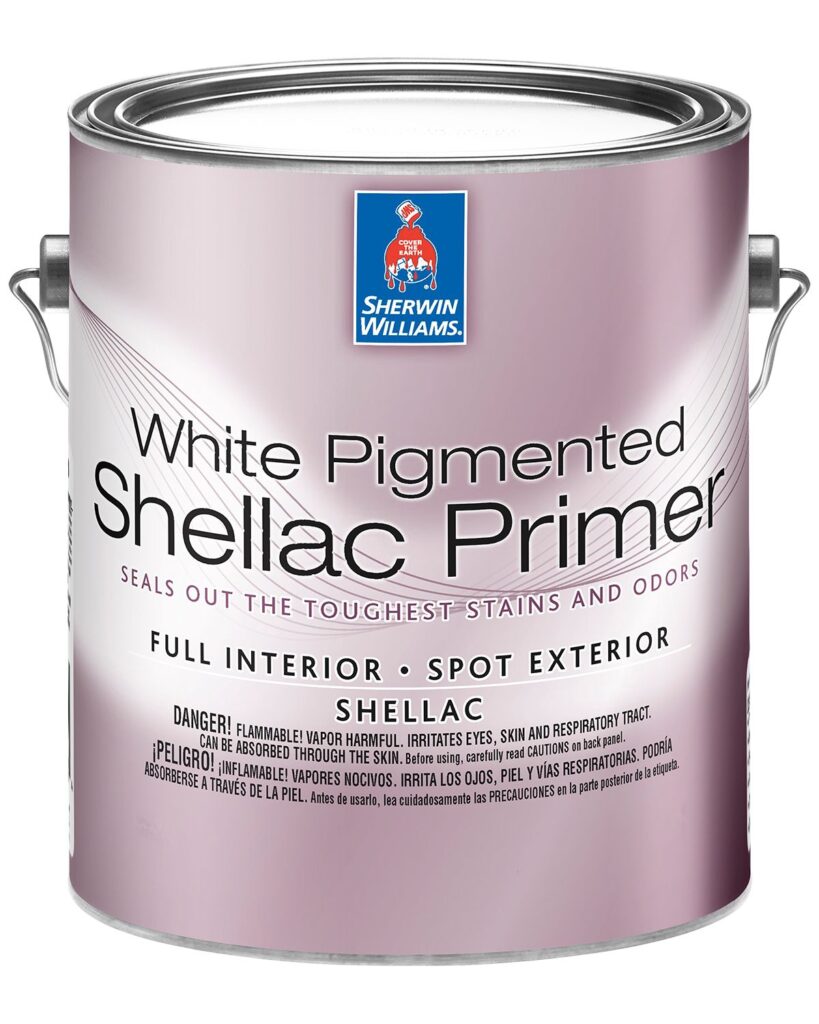
SHERWIN-WILLIAMS WHITE PIGMENTED SHELLAC PRIMER
- Hi build product with lots of solids
- Excellent at blocking tannins and water stains
- Use on raw wood with lots of tannins to block (ideal for kitchen cabinets)
- Best at blocking odor
- Builds a solid base that is difficult to scratch or remove
- Must use respiratory protection
- Coverage 300sq. ft/gallon
Sherwin-Williams’ White Pigmented Shellac Primer is the ideal option if you have tough stains you need to cover. This is an essential product for any stain conversion projects or if you are painting kitchen cabinets. Shellac primer has the best stain blocking performance.
It’s also an option if you have anything like smoke or nicotine damage on the surface because of its excellent odor-blocking properties. Just make sure you wear a mask while applying.
SHERWIN-WILLIAMS FAST DRYING PRIMER
Blocks some tannins
- A good option for cabinets, but not as good as Shellac for certain wood types
- Blocks water and other stains
- Can recoat in 1 hour
- Coverage 350 sq.ft/gallon
- Respiratory protection required
Oil-based primers are popular because of their excellent odor and stain blocking properties, but they are notorious for taking a long time to dry. Sherwin-Williams’ Fast Drying Primer gives you the best of both worlds, offering a fast-drying primer that also has solid stain protection.
It doesn’t perform quite as well as shellac primer, but the lower cost can make it a great option for the right job. Like all high-VOC products, though, you will need a mask while applying.
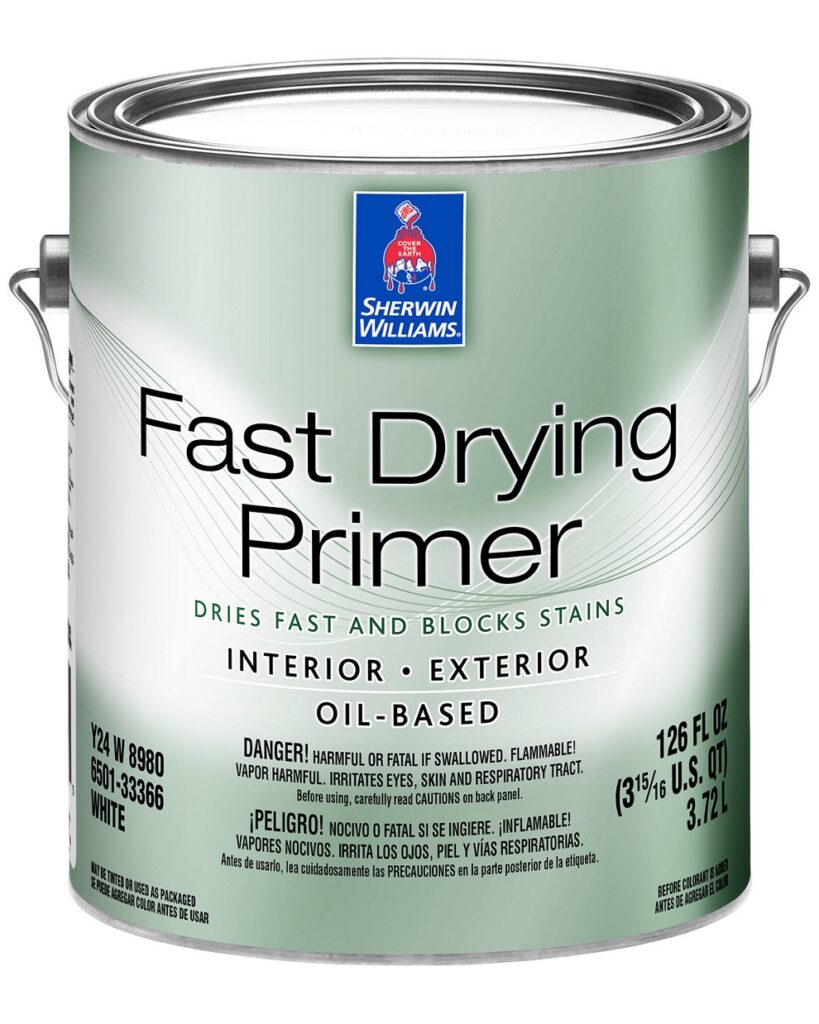
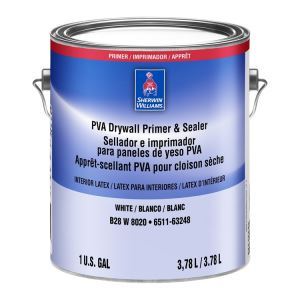
PVA DRYWALL PRIME & SEALER
- Good for priming and sealing new drywall
- Not great for blocking color
- Quick recoat time of 1 hour
- May need a quick sanding for Level 5 Finishing or a Satin Finish
Fresh drywall is incredibly porous and will soak up paint. That’s why it’s critical to prime that surface and properly seal it before applying a top coat. Sherwin-Williams PVA Drywall Prime & Sealer is specifically formulated to do just that, and at a low cost.
That low cost comes with some drawbacks. It isn’t great at covering other colors, so it isn’t the ideal option for drywall with paint already on it. The dried texture also requires some sanding to get the best look and finish.
VA Drywall Prime & Sealer is designed for a very specific purpose, so it isn’t an all purpose primer. However, it does that specific purpose very, very well.
CHB
- Used as a ceiling paint
- Uses as a color primer
Sherwin-Williams CHB is typically used as a ceiling paint, but its viscosity makes it a great primer option if you are doing a recolor. If you plan on dramatically transforming a space (especially going from dark to light), CHB is a great primer option.
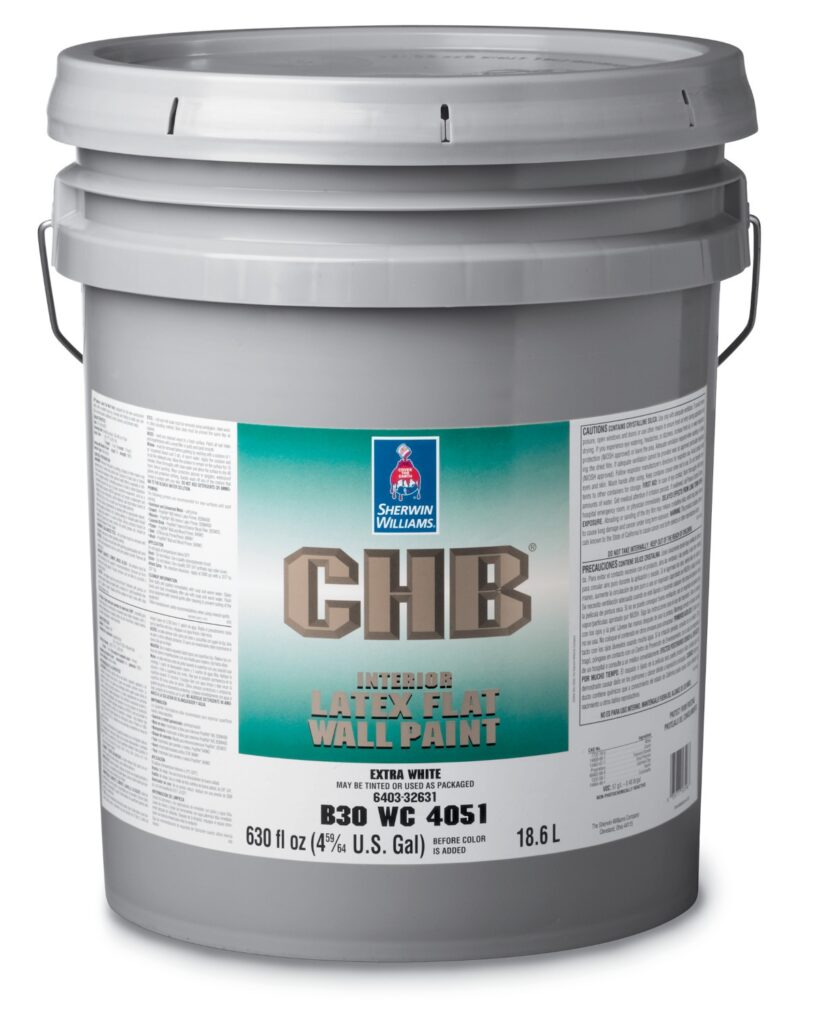

MULTI-PURPOSE INTERIOR/EXTERIOR LATEX PRIMER/SEALER
- A solid general purpose option
- Blocks some stains, but underperforms for water stains
- Best use is as a wallpaper primer prior to using glue
- Can be used to cover color
- Coverage 400 sq.ft/gallon
If you’re looking for a primer that can do a little bit of everything, Sherwin-Williams Multi-Purpose Latex Primer is a great option. It has some stain resistance, but it doesn’t block water stains very well. It has great coverage, so it’s a excellent option if you plan on painting a lot of rooms (or the whole interior).
The best application for this primer, though, is when you are putting up wallpaper. The primer blocks stains well enough to prevent it from leaking through the wallpaper, and it provides a smooth, even surface for the wallpaper glue to adhere to. Just make sure you apply it before the wallpaper glue.
EXTREME BOND PRIMER
- Good for coating slick surfaces like glass, tile, and plastic
- Scuff sanding can help adhesion
- Does not prevent scratching of surface later
- Gives topcoat something to hold onto
- Coverage 400 sq.ft/gallon
If you want to give your bathroom, kitchen, or business a fresh look but don’t want to totally renovate the space, you can give it a new paint job. Sherwin-Williams Extreme Bond Primer is great for priming tile, glass, and other smooth and hard-to-stick surface. This primer gives the topcoat something to bond to, which prevents issues like peeling and flaking down the line.
It’s important to note that this primer does not offer protection from impacts, so materials like glass and tile are still prone to cracking, scratching, and breaking.
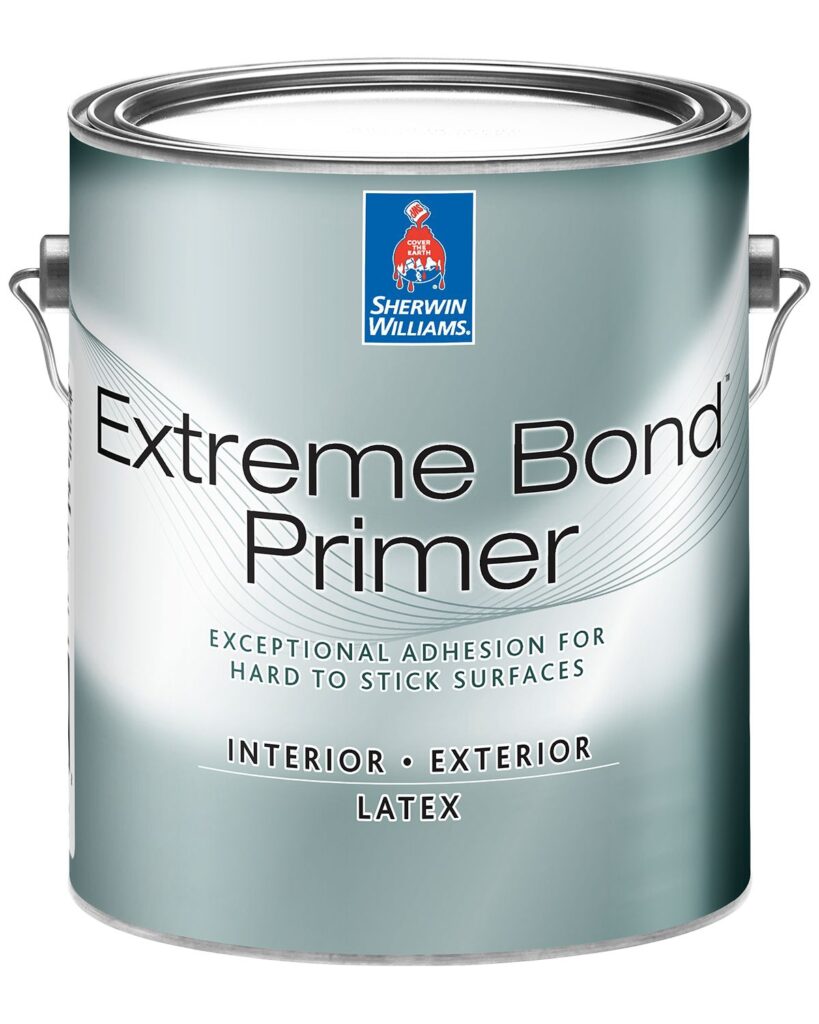
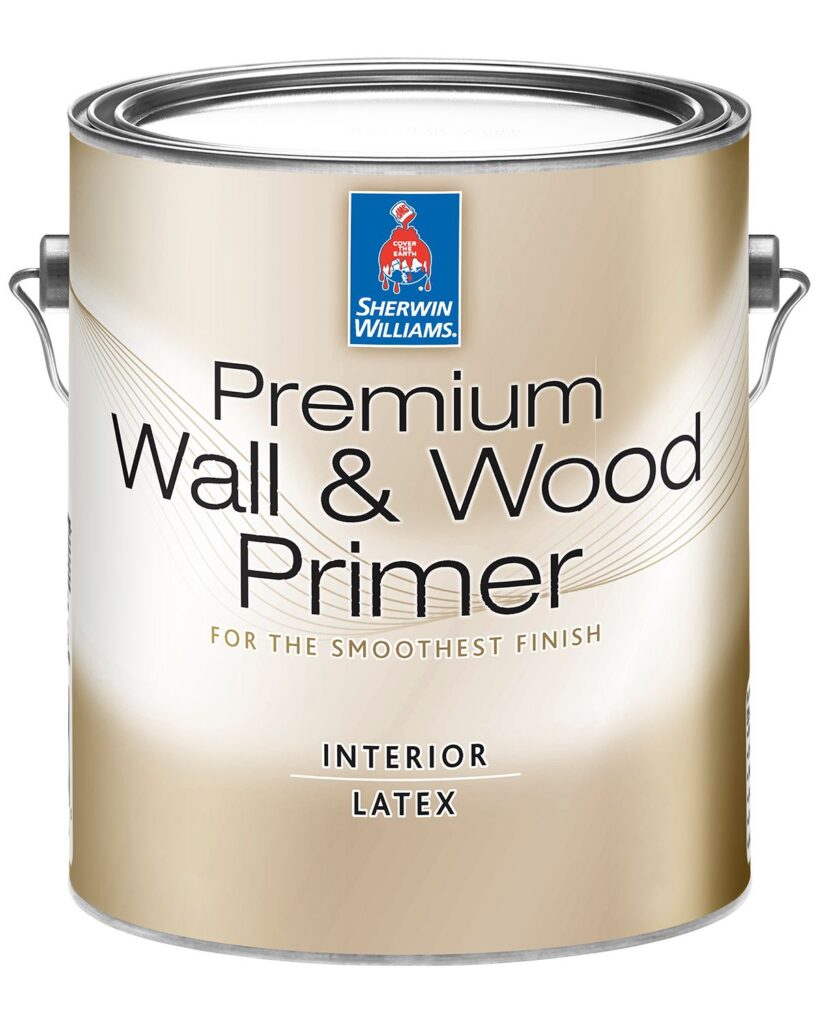
PREMIUM WALL & WOOD PRIMER
- Smoothest surface primer
- Use for new wood with low tannins
- Sand after 2 hours
- Coverage 400 sq.ft/gallon
This is the best option to get a luxurious and high-quality finish on trim items like crown, baseboards, windows, doors, and door frames. The end result is a remarkably smooth surface that will elevate the look of any space. The only downsides to this primer is its particularly aimed at new woodwork, and if there are any tannin concentrations (like in wood knots), it may bleed through.
EXTERIOR LATEX WOOD PRIMER
- Will trap tannins in the first coat
- Recoat in 4 hours
- Coverage 300 sq/ft/gallon
If you have bare wood siding, then the Sherwin-Williams Exterior Latex Wood Primer is the primer paint you will want to use. It can fully lock in tannins in the first coat, which will thoroughly prevent staining in other layers of paint. The only drawback is the long recoat time, which will slow down the project dramatically.
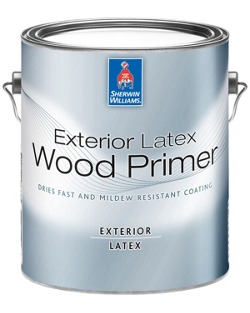
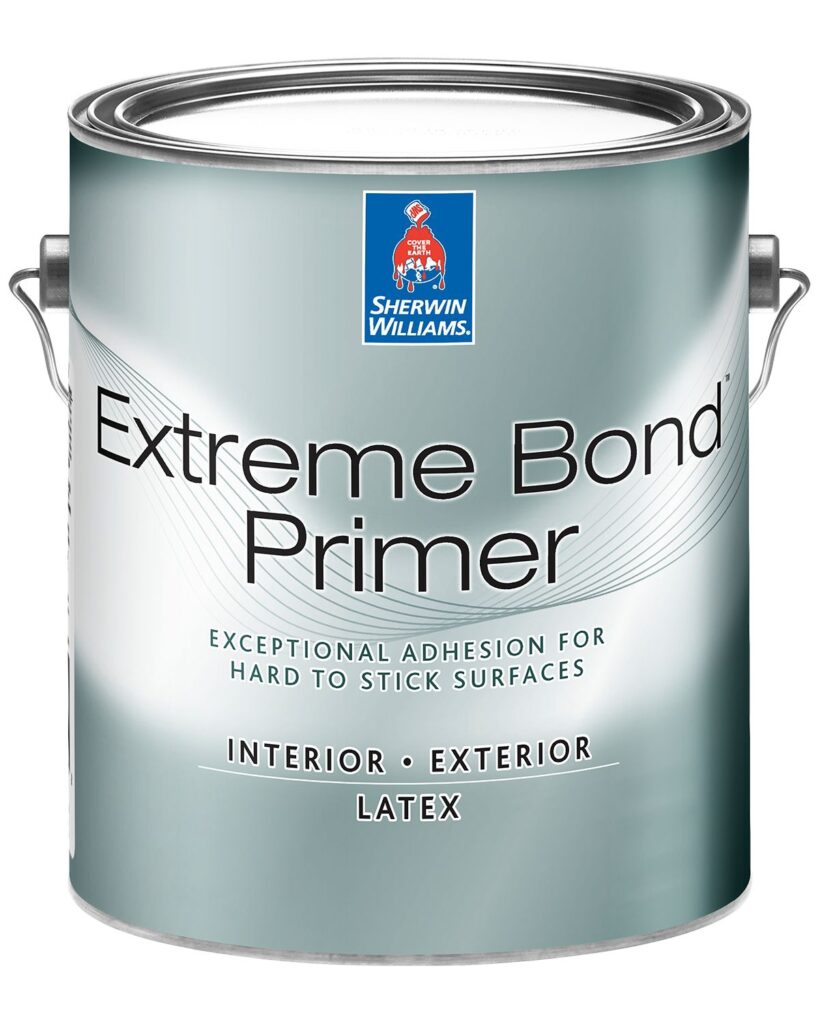
EXTERIOR OIL-BASED WOOD PRIMER
- Exterior wood only
- Best use is grayed out wood or older wood
- Slower dry times allow for deeper penetration of wood surface than fast-drying oil
- Great at blocking tannin staining on exteriors
- Recoat 24 hours
- 300 sq. ft/gallon
If you have older siding (maybe you just bought a fixer upper) and the wood siding is old and greying out, that’s where Sherwin-Williams Exterior Oil-Based Wood Primer comes in. This product has an incredibly long recoat time (24 hours), but that dry time allows the oil to soak into the look and lock any tannins and thoroughly seals the surface.
GARDZ FROM ZINSSER
- Excellent sealer
- Repairs torn paper on damaged drywall
- Eliminates bubbles
- Slows drying time and prevents flashing in highlighted areas
- Seals caulky surfaces
- Recoat 1 hour
- Coverage 500 sq.ft/gallon
If you are removing wallpaper and painting in its place, Gardz From Zinsser is the product you will want to use.This primer slows the dry time for paint, which prevents flashing.
Flashing is when the gloss on a painted surface does isn’t even (i.e. some parts look glossier than others). This is a common problem caused by wallpaper glue, and that’s why Gardz is a great product to use on any project with wallpaper removal.
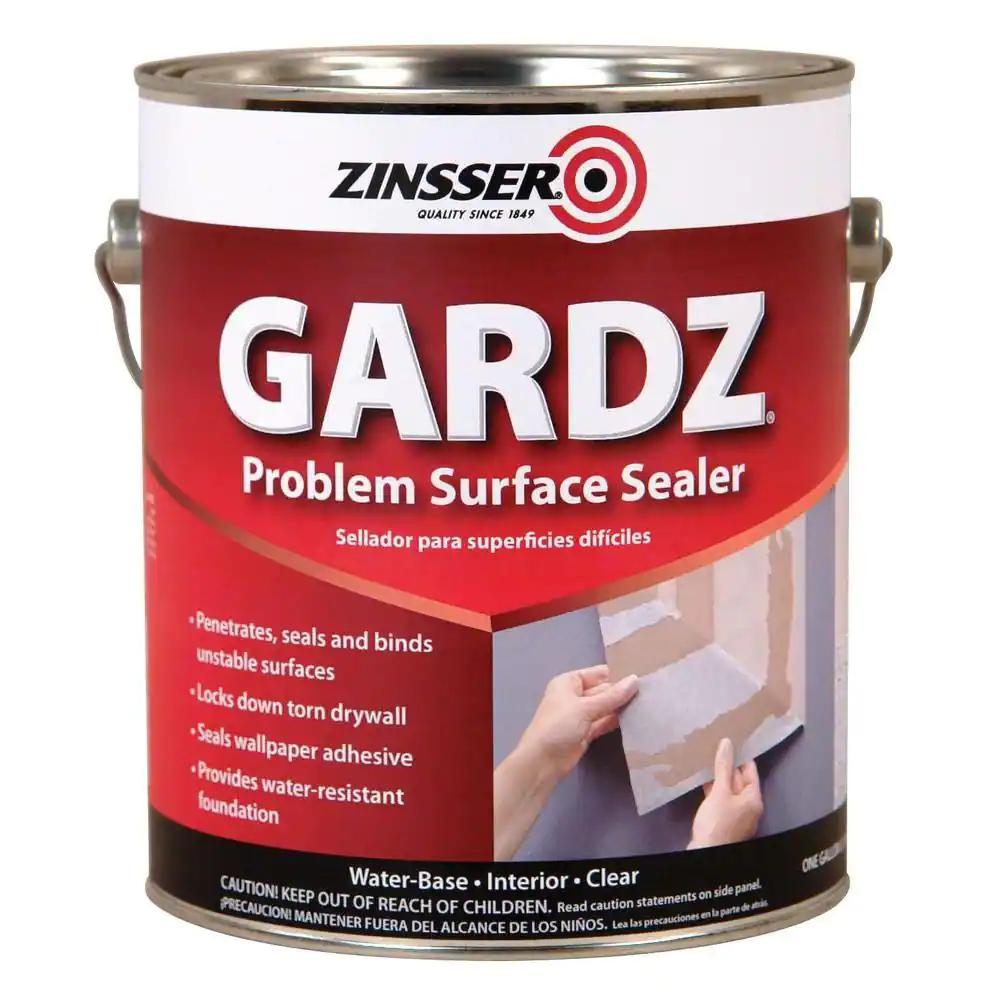
SHOULD I PAINT MY HOUSE DIY OR HIRE A PROFESSIONAL PAINTER?
For the best results, it’s definitely worth investing in a professional to paint your home interior or exterior. Painting a project DIY may seem like the cheaper option, but once you factor in the cost of materials and the time lost working on the project, you may end up spending a lot more than you would simply hiring someone.
If you’re ready to paint your home, fill out the form below for a free estimate from Heritage Painting. Our experienced team will provide a detailed and accurate quote, and we have a full-time color consultant to help you find the right color for your home.
Fill out the form below and fall in love with your home again today!
Get a Free Quote From Heritage Painting
Fill out the form below and experience the difference today.
